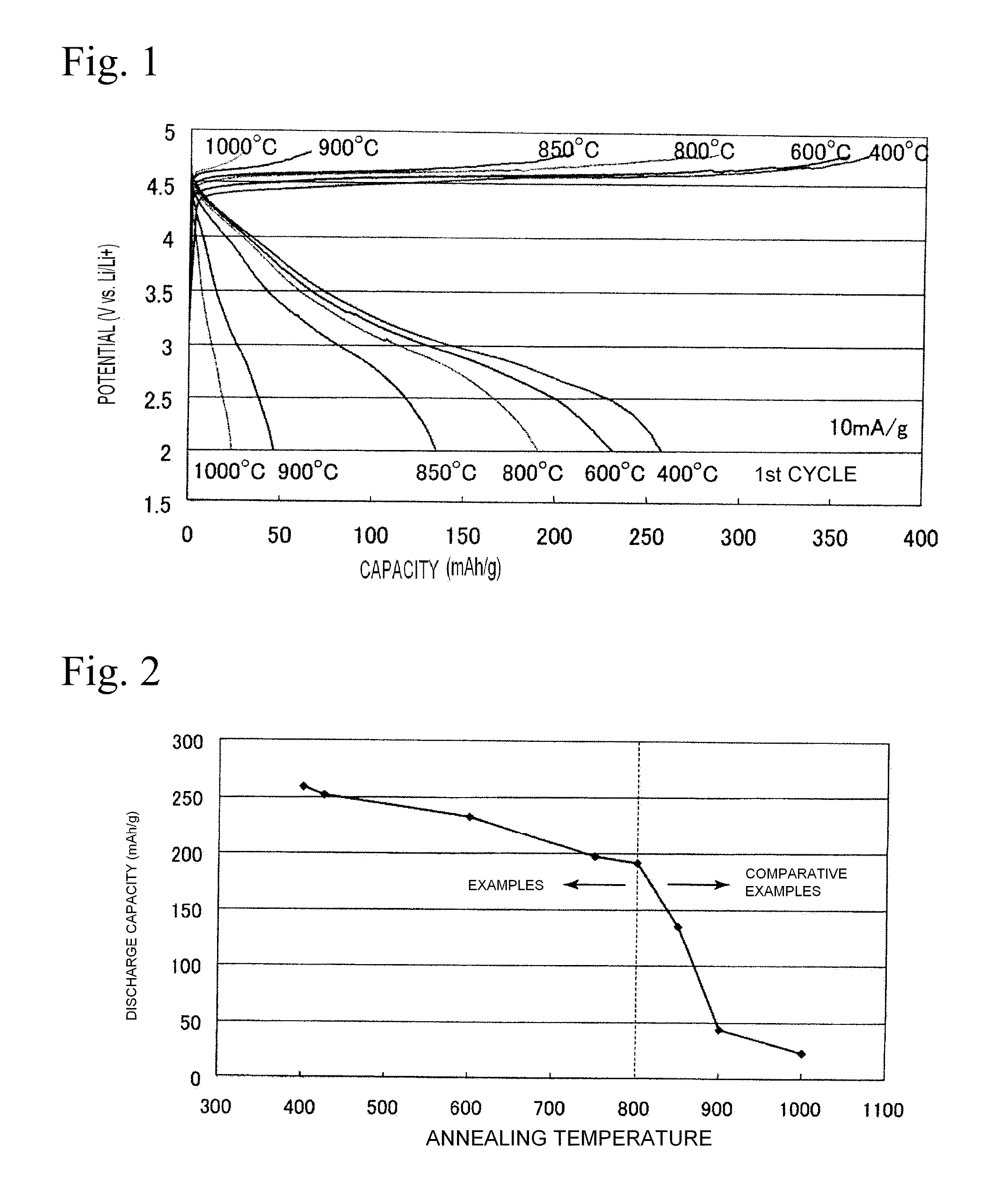Positive electrode active material for lithium secondary battery and method of manufacturing the same
a lithium secondary battery and active material technology, applied in the direction of non-aqueous electrolyte accumulator electrodes, cell components, electrical equipment, etc., can solve the problem of short diffusion path of lithium active material particles, and achieve the effect of high discharge capacity
- Summary
- Abstract
- Description
- Claims
- Application Information
AI Technical Summary
Benefits of technology
Problems solved by technology
Method used
Image
Examples
experiment 1
Examples 1 to 5 and Comparative Examples 1 to 3
Preparation of Positive Electrode Active Material
[0068]Lithium hydroxide (LiOH.H2O) and manganese carbonate (MnCO3.nH2O (n: about 0.5)) were mixed so that the mole ratio of Li:Mn became 2:1. The mixture was added in acetone and pulverized in acetone for 1 hour using a ball mill. The mixture was added so that the total concentration of lithium hydroxide and manganese carbonate in acetone became 60 weight % to perform the pulverization with the ball mill. Thereafter, the mixture was dried at 60° C. to volatilize acetone, and the pulverized mixture was annealed, without being pelletized, under the annealing conditions set forth in Table 1. As shown in Table 1, the annealing was performed under the following conditions: at 400° C. for 48 hours (Example 1), at 425° C. for 10 hours (Example 2), at 600° C. 10 hours (Example 3), at 750° C. 10 hours (Example 4), at 800° C. for 10 hours (Example 5), at 850° C. for 10 hours (Comparative Example 1)...
example 6
[0087]A lithium-manganese oxide was prepared in the same manner as described in Examples 1 to 5, except that the lithium hydroxide and manganese carbonate identical to those used in Example 1 were mixed and dry ground in a mortar and that the mixture was annealed at 450° C. for 10 hours.
[0088]The full width half maximum of the peak of the (001) crystal plane, the average particle size, and the BET specific surface area of the resultant lithium-manganese oxide were measured in the same manner as described above. The results are shown in Table 2 below.
[0089]In addition, using the resultant lithium-manganese oxide, a positive electrode was prepared in the same manner as described in Examples 1 to 5 above, and using the prepared positive electrode, a lithium secondary battery was fabricated. The discharge capacity of the lithium secondary battery was measured in the same manner as described above. The result is shown in Table 2 below. In Table 2, it was confirmed that the BET specific s...
experiment 2
Preparation of Positive Electrode Active Material
PUM
 Login to View More
Login to View More Abstract
Description
Claims
Application Information
 Login to View More
Login to View More - R&D
- Intellectual Property
- Life Sciences
- Materials
- Tech Scout
- Unparalleled Data Quality
- Higher Quality Content
- 60% Fewer Hallucinations
Browse by: Latest US Patents, China's latest patents, Technical Efficacy Thesaurus, Application Domain, Technology Topic, Popular Technical Reports.
© 2025 PatSnap. All rights reserved.Legal|Privacy policy|Modern Slavery Act Transparency Statement|Sitemap|About US| Contact US: help@patsnap.com



